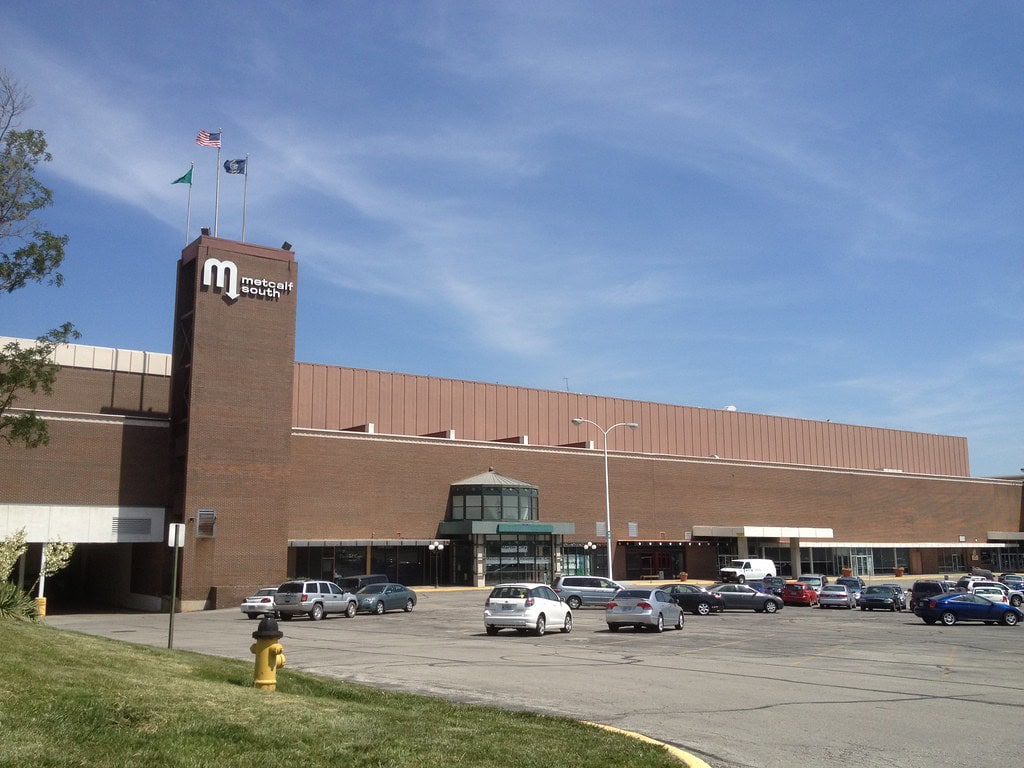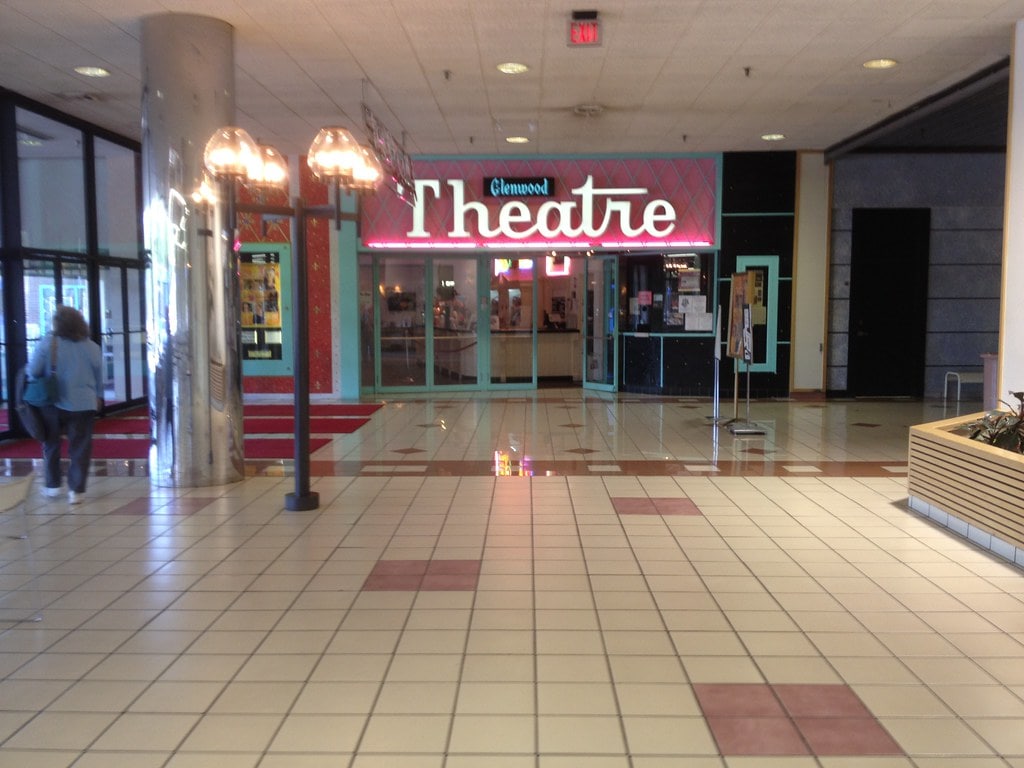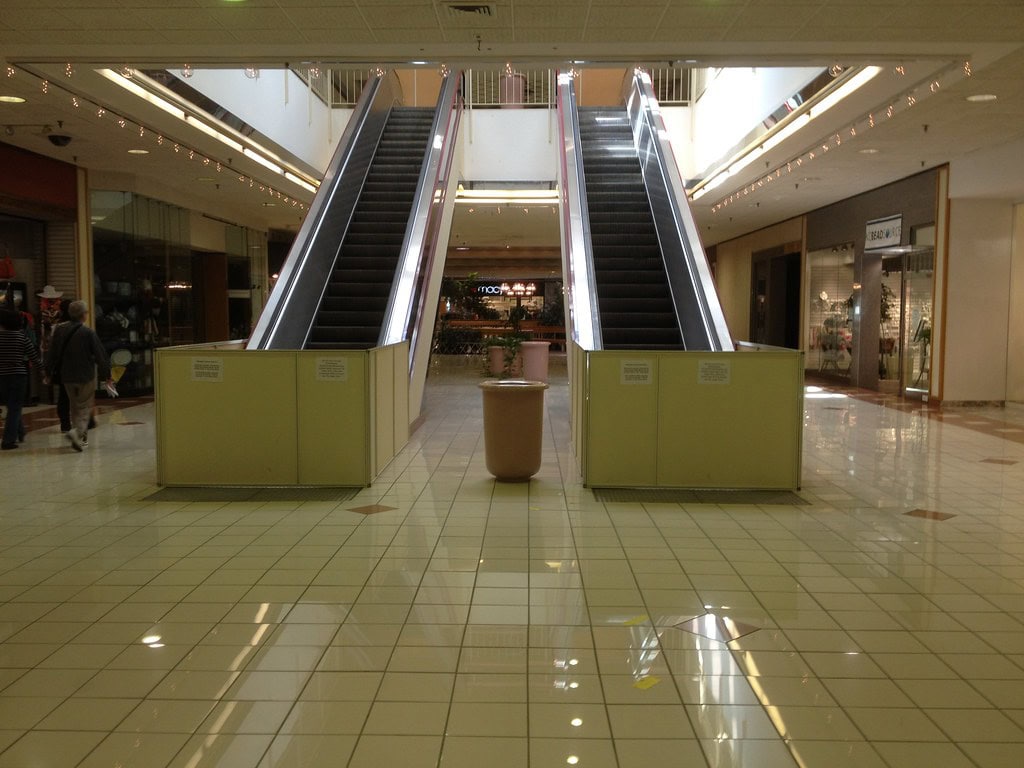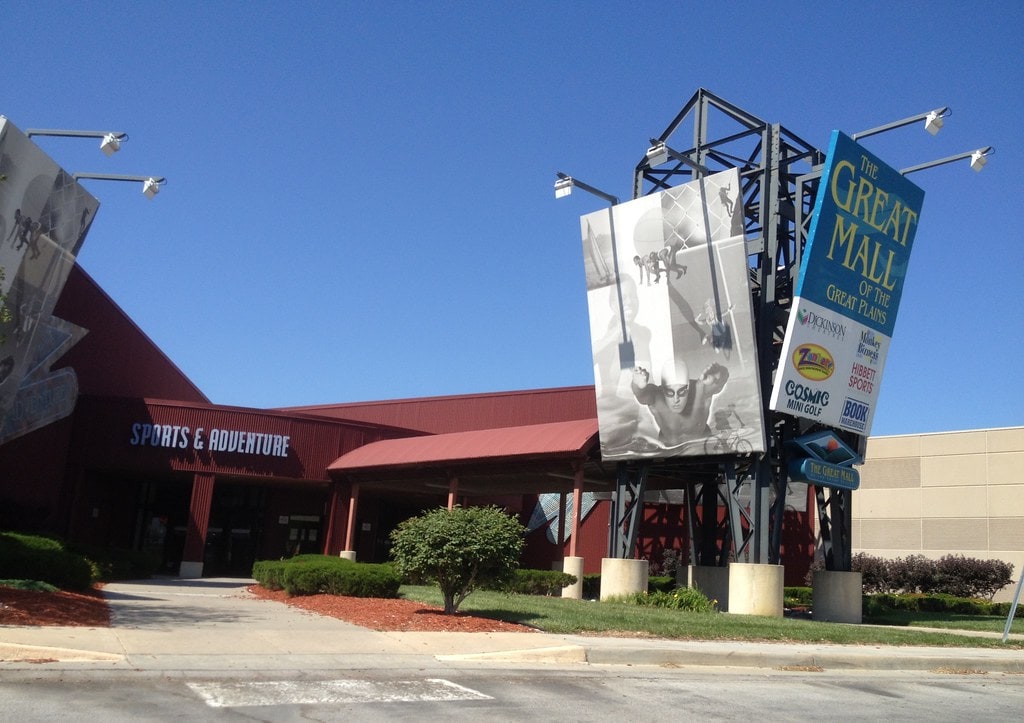Metcalf South Shopping Center imagined
The site was raw ground at 95th and Metcalf, a stretch of clay and scrub marked by survey flags and concrete stakes. Bulldozers carved out terraces for parking decks, their engines humming through the Kansas summer of 1966.
Steel columns followed, rising row by row until a full grid framed what would become the region's first indoor mall.
Sherman Dreiseszun's firm, MD Management, had planned something new for Overland Park: an enclosed, air-conditioned shopping city.
Martin Salsbury Constructors of Topeka built the structure with two anchor stores at its ends, Sears and the Jones Store, joined by a wide concourse of smaller merchants.
The design centered on a three-story atrium where a fountain would send water upward through all levels. Along its edges stood Woolworth, Safeway, Harzfeld's, Katz Drug, and Putsch's Cafeteria.
The parking decks wrapped the complex, providing space for thousands of cars and direct entry to the concourse.
By year's end, the building stood nearly complete, its walls sealed and lighting tested, leasing reached near capacity before opening, signaling demand across Johnson County's growing suburbs.
When the final tiles were laid and the fountain ran for the first time, Metcalf South was no longer a project. It was ready to open its doors.
Opening day city under a roof
The doors opened on a warm August morning in 1967, and traffic along 95th and Metcalf slowed to a crawl. People stepped from cars and buses toward glass entrances that gleamed under new signage.
Inside, cool air met the crowd as music echoed across tile floors and fountains began to run. The mayor of Overland Park cut the ribbon with Miss America Debbie Bryant beside him.
Everyone saw it as the beginning of a new time for city shoppers. The Jones Store opened first, its escalators gliding past clothing racks and smooth, polished counters.
Two months after that, Sears opened and finished the layout that stretched more than half a million square feet.
On the main level were Woolworth, Safeway, and Katz Drug, and the smell of Putsch's Cafeteria floated up through the open atrium.
More than sixty stores filled the corridors that first week, each window stocked and lit. Cars circled a three-level garage built for four thousand vehicles, and every space was filled by midafternoon.
Families wandered under skylights and paused at the fountain's spray before heading toward the theatre for an evening show. By autumn, Metcalf South had become the daily shorthand for shopping itself.

Bigger footprint, bigger pull
In 1975, trucks and cranes lined the edges of the property as Metcalf South prepared for its first major addition.
Construction extended through the summer, adding a full upper concourse and expanding the Jones Store by 38,000 square feet.
Crews worked around shoppers, pouring new concrete floors above the open atrium and linking the new spaces into the existing structure.
The expansion added nineteen more storefronts and roughly 100,000 square feet of retail area, bringing the total to about 800,000.
New lighting, railings, and flooring gave the building a brighter interior.
The third level now tied into a new parking deck, easing weekend congestion and providing a direct path to the upper floor.
Once construction wrapped up in October, the mall reopened as one of the biggest enclosed shopping centers in the Kansas City region.
By 1977, Metcalf South had reached the height of its success. Retail sales outdid every other shopping area across the metro, thanks to heavy holiday traffic and complete occupancy.
The fountain still stood in the center, spraying toward balconies lined with festive decor. On weekends, families filled the concourse, walking between the Jones Store, Sears, and local stores that kept the mall busy year-round.

Tweaks, twinning, and a glossy retrofit
By 1980, Metcalf South had settled into its routine, but the owners started making changes. The Metcalf Theatre shut down for a short time and reopened with two screens instead of one.
Crowds still came for weekend movies, walking past the fountain on their way upstairs. A few longtime stores closed, and new names appeared in their place, keeping the concourse full but always changing.
The anchors stayed put, and the mall carried on much as before. In 1989, work crews came back for a full overhaul.
Ceilings came down, floors were retiled, and bright mirrored panels went up over the walkways. Chrome railings lined the balconies, and lights reflected off the fountain below.
The old Woolworth space was turned into a food court, while the former Safeway became Carousel Park, with arcade games and small rides. By 1990, everything shone again, and for a while, the crowds returned.
New rivals bite, occupancy thins
By the mid-1990s, Metcalf South was no longer the only game in town. Oak Park Mall had grown, Town Center Plaza was new, and the Great Mall of the Plains opened with more stores and newer designs.
Crowds that once filled the three levels of Metcalf South started drifting elsewhere. The parking decks were still open, but the rush to find a space was gone.
Vacancies crept in one by one. A jewelry store went under, then a shoe shop, then a clothing chain followed behind.
Pop-up tenants filled the empty storefronts, setting out folding tables and painting their own signs. The lively noise of shoppers faded to the sound of shoes on tile.
Each morning, mall walkers traced their laps past the still-running fountain, though hardly anyone stopped to notice. By the early 2000s, most of the upper level was dark.
The only signs of life came from Sears, the Jones Store, and the Glenwood Arts Theatre. The rest of the mall lay quiet under light spilling across its empty tiles.
What had been a lively meeting spot now stood as a shadow of memory, unchanged as the city around it kept going.

Final close, sale, and teardown
In early 2014, the long decline ended. Macy's, which had replaced the Jones Store in 2006, announced it would close, leaving Sears as the last full anchor.
On March 1, Lane4 Property Group and The Kroenke Group purchased the property from MD Management, signaling that redevelopment was near.
By summer, only a handful of tenants remained. The mall officially closed to the public on September 19, 2014.
The Glenwood Arts Theatre stayed open a few more months, holding its final screenings on January 25, 2015. Sears continued to operate separately while plans for demolition moved forward.
In April 2017, heavy equipment rolled onto the site. Workers began removing interior walls before tackling the outer structure.
By midyear, the mall that had stood for fifty years was gone. Artifacts, including the large "M" sign and the fountain, were saved for preservation.
Where the atrium once stood, there was open ground again, cleared and ready for a new phase in the same spot that had once symbolized Overland Park's growth.
95Metcalf reborn, and the Sears corner moves
After demolition ended, the empty ground at 95th and Metcalf didn't stay quiet for long. Construction began again, this time for a new Lowe's Home Improvement store that opened in 2018.
The building covered more than 120,000 square feet, the first major tenant on the cleared site.
The project marked the start of a new phase known as 95Metcalf, designed for a mix of retail and service uses.
Over the next few years, the pad sites filled in. Andy's Frozen Custard opened in 2019, followed by LongHorn Steakhouse and Arvest Bank in 2021.
Landscaping replaced the old parking decks, and new access roads connected the site to nearby traffic routes.
The property shifted steadily toward a modern retail district, with smaller footprints and standalone buildings in place of enclosed corridors.
Novel Place Senior Living opened in 2021 on a section of the former Metcalf South site.
Developed by LANE4 Property Group, the three-story, 134-unit building offers studio, one-, and two-bedroom apartments for residents aged 55 and older.
The facility includes more than 25,000 square feet of shared space for dining, fitness, and activities, and provides services such as housekeeping, transportation, and daily meals.
The last piece of the old mall, the former Sears building, stood until 2022, when demolition crews finally removed it. That cleared the way for the next phase.
In 2024, city approvals were granted for a 300+ unit apartment project and a dog park on the same ground. By 2025, the former Metcalf South site remained under redevelopment.
The city had approved plans and final plats for Thompson Thrift Residential - apartment project at 97th and Metcalf, but construction had not yet started.




